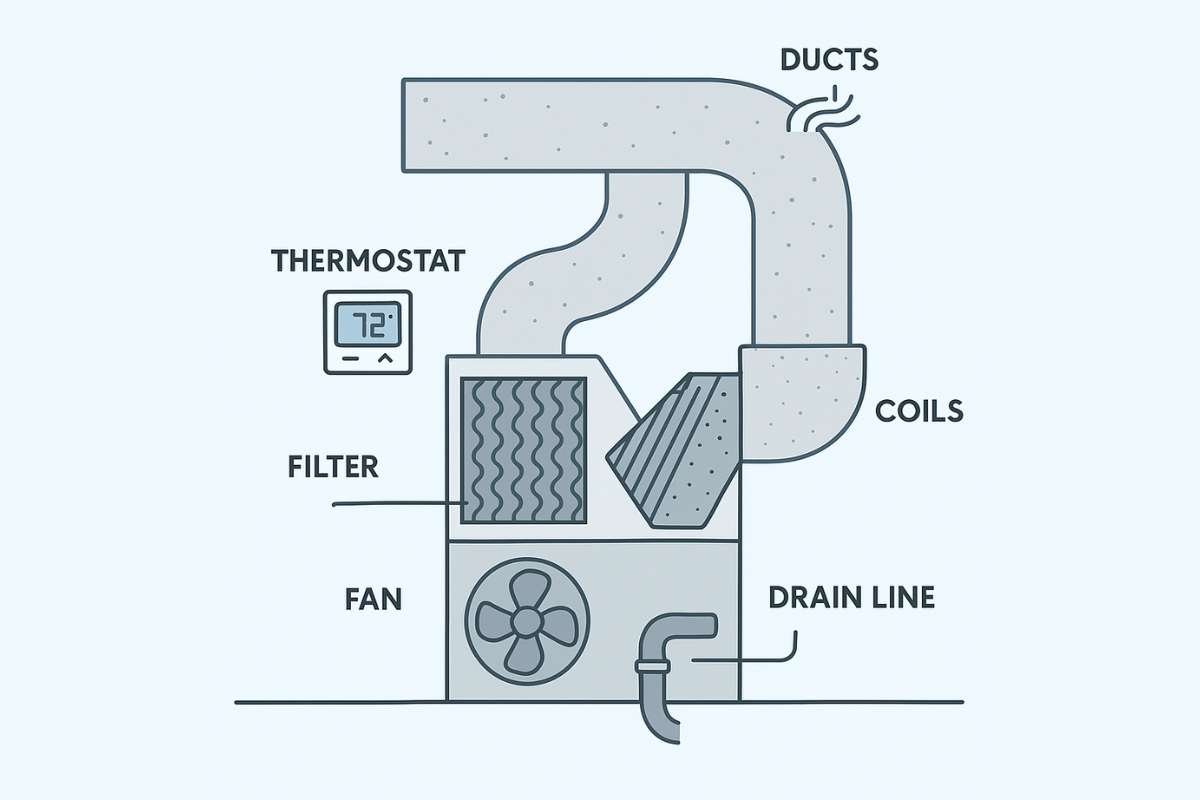Working with vendors and partners is a normal part of running a growing business. They help speed things up and bring in expert support. But every new vendor also brings some level of risk. Many companies only spot these risks after the vendor is already onboard. That is a big problem.
To stay protected, you need a strong third-party risk management framework. It helps you find, measure, and manage risks before they turn into real trouble. This article explores the essentials of a third-party risk management framework, from what it is to how to implement one that truly safeguards your business.
What is a Third-Party Risk Management Framework?
A third-party risk management framework (TPRM) helps you find, understand, and deal with the risks that come from working with outside vendors and service providers. These risks can include things like data breaches, legal issues, service delays, damage to your brand, or unexpected costs.
Today, most companies rely on global supply chains and digital tools. That means even a small issue with one third-party partner can create big problems for your entire business. A strong TPRM framework helps you stay on top of these risks, just like you would for anything inside your own company.
Why Do You Need a TPRM Framework?
Modern businesses are only as secure as their weakest third-party link. From software providers to logistics partners, every vendor you work with could be a potential entry point for risks. A third-party risk management framework provides:
- Proactive defense against data breaches and compliance failures
- Consistent vendor evaluation across departments
- Automated and repeatable processes to ensure policy adherence
- Stronger relationships with trusted and compliant vendors
- Peace of mind for stakeholders and regulatory bodies
Rather than a one-time risk assessment at onboarding, TPRM ensures a continuous, lifecycle-based evaluation of vendors.
Key Components of a Third-Party Risk Management Framework
Every effective third-party risk management framework includes the following five core components:

1. Risk Identification
Identify the types of risks your vendors could bring into your operations. This includes cybersecurity, financial instability, regulatory non-compliance, and operational disruption. Risk identification lays the foundation for all the steps that follow.
2. Risk Assessment
Assess the severity and likelihood of each identified risk. This involves categorizing risks based on their impact (high, medium, low), and determining which ones pose a serious threat to your operations, reputation, or finances.
3. Risk Mitigation
Implement safeguards to reduce risk levels to an acceptable threshold. These may include contractual clauses, insurance requirements, access limitations, and vendor security controls.
4. Risk Monitoring
Set up tools and processes for ongoing monitoring of vendors. This includes periodic audits, real-time risk scoring, and alert systems for any policy violations or emerging threats.
5. Continuous Improvement
Your third-party risk management framework should not be static. Regularly evaluate its performance and update it based on regulatory changes, industry best practices, and feedback from stakeholders.
How to Build a Third-Party Risk Management Framework?
Building a strong TPRM framework is a multi-step process that requires input from various departments, including IT, Legal, Procurement, and Compliance. Here’s how to go about it:
Step 1: Engage Key Stakeholders
Involve internal and external stakeholders early in the process. Collaborate to set priorities, define acceptable risk thresholds, and identify potential gaps in current processes.
Step 2: Conduct a Vendor Risk Assessment
Evaluate vendors based on the criticality of the service they provide, their access to sensitive data, and their security posture. Tools like NIST, FAIR, and ISO 27001 frameworks can guide this step.
Step 3: Categorize and Prioritize Risks
Once risks are assessed, prioritize them based on potential business impact. This helps in allocating resources effectively and avoiding decision paralysis.
Step 4: Customize Your Framework
Design a tailored Third-Party Risk Management Framework by defining:
- Categories of risk (e.g., cyber, legal, operational)
- Key Performance Indicators (KPIs)
- Reporting procedures
- Incident response plans
- Remediation workflows
Create templates for onboarding, assessments, and audits to ensure consistency across vendors.
Step 5: Implement Continuous Monitoring
Automation platforms like Sprinto or BitSight can be used to track vendor risk in real time. Continuous monitoring ensures you stay ahead of emerging threats without overwhelming your internal teams.
Step 6: Review and Improve
Test your framework through simulations or pilot projects. Gather feedback, measure its effectiveness, and refine it to address any shortcomings. Remember, a successful third-party risk management framework evolves with the threats it aims to counter.
What Makes a Good TPRM Framework?
Not every framework is created equal. Here are a few traits to look for when selecting or creating your third-party risk management framework:

- Integration with existing tools and workflows
- Automation to reduce manual errors and speed up response times
- Scalability to support growth and increased vendor count
- Benchmarking capabilities against industry peers
- Compliance readiness with GDPR, HIPAA, SOC 2, ISO 27001, etc.
- Clear remediation paths when risks are detected
Choosing a framework aligned with industry standards like NIST or ISO can provide added credibility and efficiency.
Benefits of a Third-Party Risk Management Framework
An effective third-party risk management framework provides your business with:

- Faster and smarter decision-making
- Improved vendor accountability
- Compliance with local and global regulations
- Reduced risk of data breaches, fraud, and disruptions
- Enhanced stakeholder trust and transparency
- Real-time insights into third-party security performance
Perhaps most importantly, it ensures your organization is prepared, not just reactive. It creates a culture of risk awareness and response before issues escalate.
Final Thoughts
You ca not ignore third-party risks anymore. Every business works with vendors, and that comes with its own set of problems. As your vendor list grows, you need a clear plan to manage these risks.
Build a risk management system that matches your goals, follows the rules, and keeps your customers happy. When you have a solid plan, you protect your business and set it up to grow without extra worries.
If you are ready to implement a smarter third-party risk management framework strategy, consider solutions like Sprinto that automate compliance tasks, centralize risk management, and offer continuous security monitoring.
FAQs
Q1. What is an example of third-party risk?
A software vendor experiencing a data breach that affects your customer data is a classic third-party risk.
Q2. Why is a TPRM framework important?
It ensures your vendors do not become a liability by helping you track and control potential risks throughout their lifecycle.
Q3. Who is responsible for managing third-party risk?
It’s a cross-functional responsibility involving IT, Legal, Procurement, and Compliance teams.
Q4. Can automation help with third-party risk management?
Yes. Automation tools help you streamline monitoring, risk assessment, and compliance reporting.


















